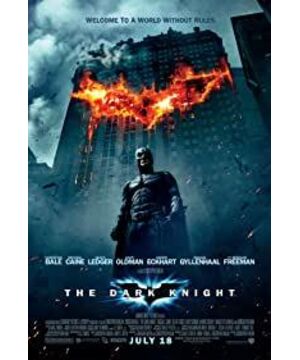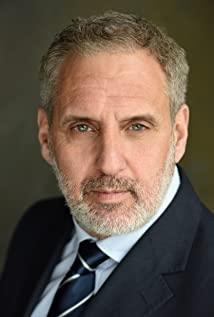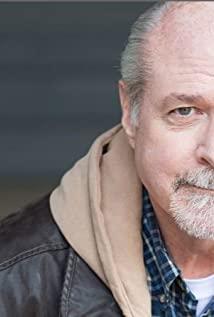There is no doubt that TDK is better than TDKR. Each of the two films has a clear theme. The former discusses "anarchism", while the latter is "eliminating exploitation and seizing power." In fact, both themes are quite big, but what makes TDKR powerful is that it uses a grand theme to torture the most primitive human nature. When the incident falls on the choice of personal will, it is the moment when our sense of identity is greatest. Think about it, in the second part, without Batman’s life and death choice between Rachel and Harvey, how Bruce Wayne, as a flesh and blood individual, would appear under Batman’s mask, even wearing a mask. You fight back into human form, which is a humanization of Batman, and after Rachel's death, it is even more obvious to torture humanity with suffering. The clown just wants to say: You are so miserable, see if you can harden it! The same is true for the subsequent two-ship game. Until the end, Batman, who endured the pain of losing Rachel, took on Harvey's guilt alone. This painful motif can be recognized by anyone. By the end of the film, there will naturally be a feeling of reverberation. . In TDKR, the theme has become bigger to a certain extent, and the bet in the film has also increased from the lives of the two boatmen in the second episode to the nuclear bomb crisis that concerns the lives and deaths of more than 20 million people in the city, but on the contrary Of course, the manifestation of the complexity and greatness of personal will and human nature is much dimmer than in the second part. Although there is Bruce in the film Wayne overcomes the pain, embraces the fear again, and finally overcomes the passage of self crawling out of prison. But as mentioned before, such a setting is not selective, and there are too few options. At that time, Bruce had nothing to lose in essence. Racheal was already dead, and Alfred, the closest housekeeper, had already left him. And to go, his behavior is just a struggle, it is a kind of reluctance that there is nothing left to lose. In this way, the power is naturally weakened. To put it simply, "barefoot is not afraid to wear shoes", which makes it less epic of sacrificing and destroying oneself for a bright belief as in TDK. People’s frustration and powerlessness come from "missing". The loss of beautiful things always makes us feel frustrated and powerless. The powerlessness conveyed by this is extremely well done in TDK. After Racheal's death, Bruce took off The mask sat down and faced Alfred. At that time, the sense of powerlessness was the strongest. It was the frustration of an individual with incomparably determined will after facing the predicament of choice. It was a kind of self-doubt with almost despair. . In TDKR, there is almost no opportunity to express this emotional power. Maybe Nolan wants to make Bruce fall into an irreversible desperation as soon as possible. The "lost of the protagonist" in TDKR seems too simple and rude, just In a battle with Bane, Batman "lost his people", and this kind of loss is not based on the most primitive emotions of people like in TDK. The loss here is too broad. After all, the "people" is this kind of loss. The vocabulary that represents the public will dispel most of the original emotions of the individual, and the establishment of audience identity will not be so easy. Naturally, there will be no chance for "entanglements of will" like TDK. Of course, with TDK’s jade in front, as mentioned earlier, Bruce has essentially nothing to lose in TDKR. TDK has achieved the extreme in this respect, and this has also led to a certain extent. The narrative in three acts is weak. In this way, what the film focuses on can only show the maximum energy that a person can burst when Bruce falls into prison. The film is here at least in place. Nolan has done enough in the audio-visual expression of this paragraph. The picture is combined with the co-authored Hans. Zimmer’s grand soundtrack is very inflammatory, and the prison with the round well opening up clearly symbolizes the light and rise visually. At that time, Bruce had only the Huashan road. From this look, TDKR is actually more like the number one. In the enhanced version of the part, Bruce re-travels the mental journey that he traversed in the first part, but the plot itself still makes this final part lack the complex charm of human nature shown in the second part and the difficulties people are facing. The powerlessness of time. This is another kind of helplessness brought by TDK. TDKR's plot combines the clues from the previous two parts, and the first half contains a lot of backtracking about the previous plot. In fact, this can give TDKR's plot a natural advantage, because it has TDK as a foundation. I believe that all viewers who have watched the second part have some emotions before entering the theater, which is brought about by the story in the second part. There are two main points. One is the pain that Racheal brought to Bruce after Racheal's murder and the letter written by Racheal to Bruce who was burned by Alfred. The other is Batman's sole responsibility for Harvey's guilt and the audience's sense of identity. Nolan echoed these two points in the first half of the film, but I don't think it was fully used, and the use was too sloppy. In the first half of TDKR, the film spent a lot of pen and ink to create Bruce's reclusive life after eight years of retiring. From the words of the beholders and the appearance of Bruce after living alone, it is all about this. The pain and loneliness of eight years of life has been set, but it has not been further exaggerated afterwards. The truth of Racheal’s letter was revealed only after Bruce returned with the Batman mask eight years later, disappointed. Alfred said at the top of the stairs, I think this scene is the most violent passage in the entire TDKR. The original truth about this letter can be used to observe the pain and entanglement of Bruce’s heart, and it can be used to dig Bruce The character of Wayne is deep, and the painful exploration of Bruce's heart can make TDKR strengthen the dark atmosphere of the character that has been laid in the first two parts. I think about this point, Nolan has not used it well here, and good steel has not been used on the blade. If this point is used well, then the subsequent paragraphs about Batman finding Catwoman and asking him to help him find Bane and fight him will have a clearer emotional support. Bruce is too painful, and Alfred's departure made him even more lost. All, he went to a duel with Bane with a death-seeking mentality, he might need death to end his pain unconsciously, he was too tired. After all, Bane once said to Bruce: You don’t want to know about death. Regarding Batman’s pavement for Harvey’s gangster, Nolan gives people a sense of rashness. I think this can be used as a key plot point at least, but Nolan let the truth be in Gotham. It was already in chaos enough that Bane said based on the speech of Sheriff Gordon that the purpose of exposing this lie was only to undermine the public’s trust in the judicial system represented by Director Gordon, arouse public outrage, and set off a revolution. Waves. However, Nolan’s performance of the people’s revolutionary riots in the bourgeoisie in subsequent films is far from being achieved by Bane by exposing the lies of the political and legal system. It can be achieved only by relying on the deterrence of the previous Bane nuclear bomb and its own incitement. . Either Nolan's performance of the popular riots was not detailed and powerful enough, or he was taking the blame for Harvey. The plot point was indeed used as an overkill here. It was a sledgehammer. In short, the dramatic power of this plot point was not fully utilized. In view of the look of "A Tale of Two Cities" revealed in the film's public trial, I think Nolan is ambitious about the performance of the popular riots, after all, this involves the film's "revolution" theme. Therefore, it should be reasonable to use Harvey's lies as the fuse of the real riots of the people. The problem is that the expressiveness of the passages about the people's riots is far from the strength of this plot point, and it also used the nuclear bomb with Bane before. Threatening the city and throwing the city into chaos has a slight repetition of the same quality in the drama. After all, the city is already chaotic enough, so why not mess up a bit? Finally, let’s talk about the third act of the film. Many people say that the plot of the last act of the film is tight and no urine, but I think the plot of the third act is the most lengthy. Because it took nearly 40 minutes to tell the simplest thing: to prevent the explosion of a nuclear bomb. I think it makes people feel The plot is compact, first of all because Nolan uses a consistent multi-threaded narrative in this paragraph, using parallel editing to show how various people work together to stop the nuclear bomb, but the problem is that the behavior of these characters does not really turn in the plot, it does not Like the last scene of TDK, there are clear levels. First, we must solve the problem of the two-ship game, and then we must rush to solve Harvey, and take the blame for it, and deduct the level. In TDKR, everyone has only one goal: to stop nuclear bombs. Nolan is nothing more than cutting the behavior of various people and horses into smaller pieces and interspersing them in parallel. In the plot itself, there is no qualitative leap on a level. And the second reason is that at the end, Batman’s plot flipped after he took control of Bane. Miranda behind Batman is the biggest villain. The plot here is indeed turned, but it is irreconcilable with the previous plot. The injury was mainly about Miranda's insufficient preparation, or insufficient preparation, which seemed a bit abrupt. But the background story about Miranda is easy to tell, and the previous details are well laid out, so it eliminates the sense of violation of Miranda's sudden transformation into a villain. But overall it still looks very hard, and such a flip completely destroyed the character of Bane, making it completely superficial. It is these problems that make the third act of the film show a little messy appearance, and there is no clear concept to integrate these scattered passages, but fortunately, the final nuclear bombing passage is handled extremely powerfully, which is really a bit of you. Ruthless, I taste more ruthless than you. TDKR finally took on such a face, with both full two-part restrictions and possible reasons for the Nolan team's own mishandling. But no matter what, TDKR still creates a sense of timelessness, and the epic and operatic feel of the film is also reflected under Nolan's usual standards. This concluding chapter has a timeless inevitability, but also has the helplessness of the series itself. leap. And the second reason is that at the end, Batman’s plot flipped after he took control of Bane. Miranda behind Batman is the biggest villain. The plot here is indeed turned, but it is irreconcilable with the previous plot. The injury was mainly about Miranda's insufficient preparation, or insufficient preparation, which seemed a bit abrupt. But the background story about Miranda is easy to tell, and the previous details are well laid out, so it eliminates the sense of violation of Miranda's sudden transformation into a villain. But overall it still looks very hard, and such a flip completely destroyed the character of Bane, making it completely superficial. It is these problems that make the third act of the film show a little messy appearance, and there is no clear concept to integrate these scattered passages, but fortunately, the final nuclear bombing passage is handled extremely powerfully, which is really a bit of you. Ruthless, I taste more ruthless than you. TDKR finally took on such a face, with both full two-part restrictions and possible reasons for the Nolan team's own mishandling. But no matter what, TDKR still creates a sense of timelessness, and the epic and operatic feel of the film is also reflected under Nolan's usual standards. This concluding chapter has a timeless inevitability, but also has the helplessness of the series itself. leap. And the second reason is that at the end, Batman’s plot flipped after he took control of Bane. Miranda behind Batman is the biggest villain. The plot here is indeed turned, but it is irreconcilable with the previous plot. The injury was mainly about Miranda's insufficient preparation, or insufficient preparation, which seemed a bit abrupt. But the background story about Miranda is easy to tell, and the previous details are well laid out, so it eliminates the sense of violation of Miranda's sudden transformation into a villain. But overall it still looks very hard, and such a flip completely destroyed the character of Bane, making it completely superficial. It is these problems that make the third act of the film show a little messy appearance, and there is no clear concept to integrate these scattered passages, but fortunately, the final nuclear bombing passage is handled extremely powerfully, which is really a bit of you. Ruthless, I taste more ruthless than you. TDKR finally took on such a face, with both full two-part restrictions and possible reasons for the Nolan team's own mishandling. But no matter what, TDKR still creates a sense of timelessness, and the epic and operatic feel of the film is also reflected under Nolan's usual standards. This concluding chapter has a timeless inevitability, but also has the helplessness of the series itself.
View more about The Dark Knight reviews











